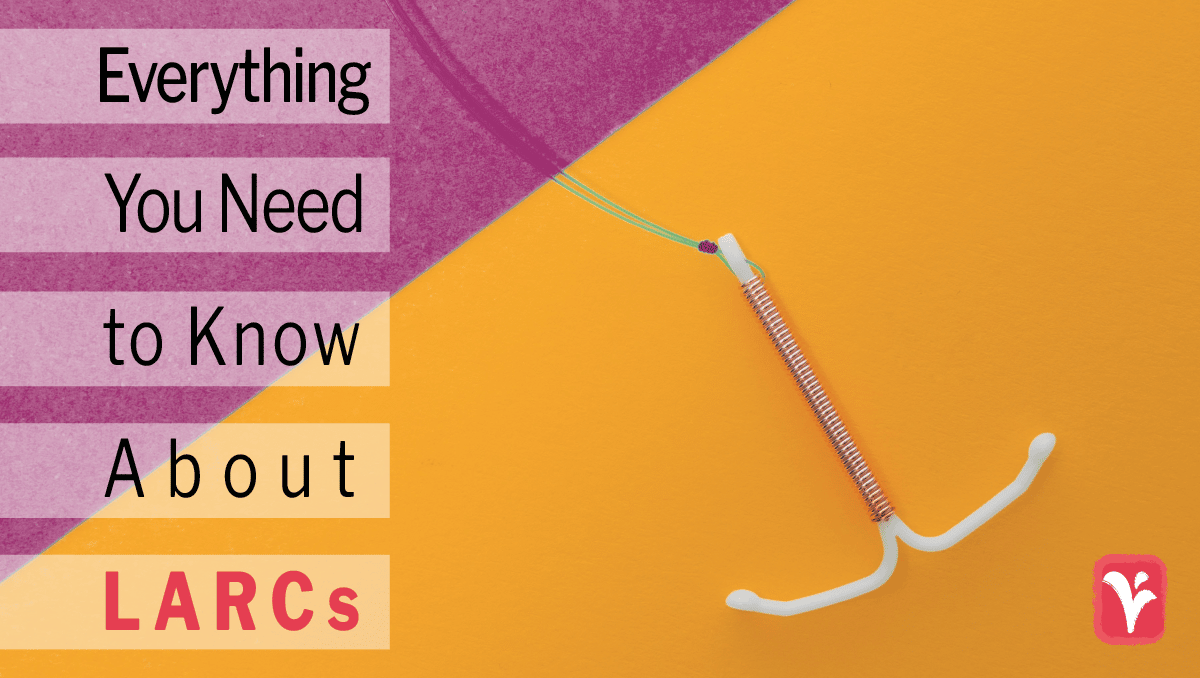LARC is short for Long Acting Reversible Contraceptives (LARCs). LARCs can prevent an unwanted pregnancy 20 times more effectively than other methods like pills, patches, and rings. While contraceptives are not one size fits all, LARCs may be right for you. They are a convenient and long-lasting contraceptive method.
A 2018 study explained that LARCs are generally more effective than Short Acting Reversible Contraceptives (SARCS), such as birth control pills, patches, rings, and injections. One of the reasons why LARCs are effective is because they are not user dependent. A common reason why SARCs may fail is due to user errors such as not taking it, skipping dosages, or even improper storage. Risk of getting pregnant increases due to inconsistent use of SARCs. However, the risk of unintended pregnancy with LARCs is only 0.1-0.2% each year; they are more than 99% effective.
The study above also uncovered other positive effects of using LARCs. They may offer short and long-term health benefits. For short-term benefits, LARCs could help reduce menstrual blood, decrease painful periods, decrease anemia, possibly protect from endometriosis symptoms, and positively affect mood for premenstrual syndrome (PMS.) All reversible contraceptive methods may also protect against some forms of cancer. LARCs have higher satisfaction and continuation rates than SARCs at the 12-month mark.
What Are the Long Acting Reversible Contraceptive Methods?
LARC methods include IUDs and birth control implants.
IUDs
The IUD is a small t-shaped device that is about the size of a quarter. There are two types of IUDs: copper and hormonal.
Copper IUD
In the US, there’s only one brand of copper IUDs, which is Paragard. The copper IUD releases copper into the uterus. It does not contain hormones. The copper IUD is approved for use for up to 10 years, but some research suggest it’s good up to 12 years. It protects against pregnancy as soon as it is inserted.
Hormonal IUD
The hormonal IUD releases the hormone progestin into the uterus. Depending on the brand, hormonal IUDs are approved for use between 3 and 8 years. There are four brands of hormonal IUDs available in the US: Mirena, Kyleena, Liletta, and Skyla. Each brand works the same and contains the same hormone. At Austin Women’s Health Center, we offer Mirena, which works for up to 8 years. If a hormonal IUD is placed fewer than seven days from the start of your period, you do not need a backup method such as condoms to protect against pregnancy. However, if it is placed more than seven days after the start of your period, you need to use condoms or avoid intercourse for seven days.
An IUD can be inserted at any time during your menstrual cycle. You may have a pregnancy test or STI test before IUD insertion. Removal of copper and hormonal IUDs is simple. Your IUD can be removed at any time by your provider. If your IUD is about to expire, it can also be replaced.
IUD Pros and Cons
Pros:
- Convenience
- Effective at reducing unintended pregnancy risk
- It lasts a long time
- Effective birth control you don’t have to think about every day
- You become fertile almost as soon as an IUD is removed
- IUDs may lower the risk of cervical cancer
Cons:
- With the copper IUD, painful periods and bleeding may increase during the first months of use
- Hormonal IUDs may cause spotting and increased or heavier bleeding during the first months of use
- Potential side effects such as mood changes, nausea, headaches, and breast tenderness
- In the rare case that pregnancy occurs, there is an increased risk for ectopic pregnancy
- Other infrequent complications
The Birth Control Implant
The birth control implant is a tiny flexible rod about the size of a matchstick inserted in the upper arm. The only birth control implant brand available in the US is Nexplanon. You can use Nexplanon for 3 years.
The hormone progestin in the implant works to prevent pregnancy by stopping ovulation and thickening the mucus of the cervix. While the implant can be felt under the skin, it cannot be seen. The birth control implant can be placed after an abortion, miscarriage, or childbirth. The implant can be inserted at any time during your menstrual cycle. The implant is effective immediately if placed within five days of your menstrual cycle. If you receive the impact five days after the start of your period, use protective barriers like condoms or avoid intercourse for seven days.
Birth Control Implant Pros and Cons
Pros:
- Convenient to use
- Safe and effective
- Reduces menstrual period pain
- As soon as you want to get pregnant, you can have it removed
- It lasts for a long time
Cons:
- Rare occurrences of problems with removal or insertion of the implant
- While pregnancy with the implant is rare, there is an increased risk of ectopic pregnancy
- Changes in menstruation
- Possible side effects such as acne, weight gain, breast pain, headaches, and digestive issues
LARCs do not prevent sexually transmitted infections (STIs), so it’s important to still use protective barriers such as condoms and dental dams during sex. LARCs are safe and effective methods for all ages of people with the capacity for pregnancy. You can get one if your provider says you are eligible for an IUD or birth control implant.
